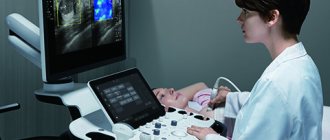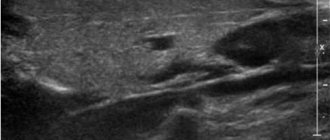Mammology is a field of medicine devoted to the diagnosis, treatment and prevention of diseases of the mammary glands. One of the central problems of the discipline is breast cancer. This disease was known back in Ancient Egypt: in papyri that are more than 3,500 years old, the symptoms are quite accurately described. The Egyptians spoke of bulging tumors for which there is no cure.
Fortunately, modern medicine has come a long way, and even breast cancer is not a death sentence. However, timely identification of the problem is important. If a woman under 50 years of age is regularly diagnosed, the risk of death from breast cancer is reduced by 15%. For women over 50, the figure is even higher—23%. According to statistics, about 70,000 cases of breast cancer are registered in Russia every year, and the disease is rapidly becoming younger, and therefore diagnosis cannot be delayed. A timely visit to a mammologist can save a life.
What is the difference between a mammologist, an oncologist and a gynecologist?
A mammologist is a doctor who deals with the prevention, diagnosis and treatment of diseases of the mammary glands; the doctor also monitors the recurrence of breast diseases and deals with rehabilitation. In Russia there is no such specialty at the official level. As a rule, mammologists have a basic specialty in gynecology, oncology or surgery.
Among mammologists, even narrower specialization is acceptable. For example, a breast radiologist is a professional in recognizing breast pathologies that can be detected using x-rays. A breast surgeon specializes in treatment through surgery. A gynecologist-mammologist deals with dyshormonal diseases of the mammary glands.
What diagnostic methods does an oncomammamologist use?
First of all, the mammologist-oncologist will prescribe an ultrasound or mammography. These studies help to identify pathological neoplasms and suspect their tumor nature. To clarify the diagnosis, doctors resort to a biopsy. In various ways (most often using a special needle), a fragment of tissue is obtained from a suspicious formation and sent to the laboratory. After histological and cytological examination, the diagnosis can be established with almost one hundred percent accuracy.
Studies such as CT, MRI, ultrasound of the abdomen, chest x-ray, and PET scan help to assess the spread of cancer in the body.
Signs that you need to urgently make an appointment with a mammologist
Along with regular visits to the doctor for the purpose of prevention, it is necessary to pay attention to any ailments. There are signs that indicate that you need to contact a mammologist as soon as possible. Namely:
- When palpating the breast, lumps and lumps are felt;
- pain and excessive sensitivity of the breast;
- feeling of swelling - the chest feels too heavy;
- redness, peeling of the skin of the breast, the presence of “orange peel”;
- discharge from the nipples (serous, purulent, bloody);
- cracked nipples;
- diaper rash and ulcers under the breasts;
- enlargement of local lymph nodes;
- change in the appearance of the nipples - wrinkling, retraction, etc.;
- itching in the nipple area;
- asymmetry of the mammary glands;
- chest injuries;
- areolas change size and color;
- the appearance of rashes on the nipples.
Any alarming changes that could be potential symptoms of breast disease should be reviewed by an experienced physician. Remember that some diseases may not make themselves felt for a long time. In the early stages, breast cancer can only be detected with specialized examination.
Breast cancer: symptoms
Considering that breast cancer is perhaps one of those major diseases that women are especially afraid of, it is important to know what symptoms appear with it at the obvious stages of its relevance, that is, when, in general, any phenomena have already otherwise, but they make themselves felt.
So, first of all, it is pain. An important fact is that from time to time women, one way or another, encounter pain in this area. If chest pain occurs frequently, it can be assumed that hormonal changes are the cause of this phenomenon (in up to 90% of cases this is exactly the case). With pain in only one of the mammary glands, as well as with the appearance of discharge in the same gland, with engorgement of the skin and with the detection of a tumor formation during palpation, we can say that the symptoms manifested in a particular case look somewhat more serious than just pain in the breast. breasts
Pain in the armpits, pain in the nipple area - these manifestations occur in approximately 10% of cases in women during the premenstrual period. The pain that appears in this case is characterized as dull. To relieve pain, you should reduce the amount of salt in your diet a few days before your period begins, and you should also avoid drinks that contain caffeine during this period. Due to this, fluid removal from the body will occur unhindered; breast tissue is also no exception.
If you have undergone a previous biopsy procedure or with a previous injury, the pain is of a slightly different nature. Thus, the concentration of pain is noted in a specific area, without connection with the menstrual cycle. The nature of the pain is cutting or shooting. It should be noted that after a biopsy, pain can persist for up to two years, the pain is concentrated mainly in the chest, although the main focus of pain is concentrated in the ribs. If the pain increases with a deep sharp breath or when pressing on the ribs, there is reason to assume that the patient has nothing more than arthritis.
Stress in pain also has its own position in terms of the manifestation of symptoms. So, if the level of stress hormone in the body is increased, then the pain in it also increases, regardless of the area of their localization; accordingly, this is also true for the mammary glands. If you add this to the influence of alcohol, coffee and poor diet in combination with your daily routine, you will soon notice that pain in the chest increases.
The next symptom that you should pay attention to in the context of this disease is the appearance of discharge. Although discharge may be alarming, in reality it has nothing to do with cancer in most cases. Basically, this is a normal phenomenon, relevant for the second part of the menstrual cycle; the reason for their occurrence is the accumulation of a certain amount of fluid in the area of the milk canals. If pregnancy does not occur, this fluid disappears over time. It should be noted that the excited state of the nipples can lead to the release of a small amount of this fluid; it is mostly either transparent or slightly cloudy. Sometimes such discharge occurs against the background of undergoing significant physical activity.
Despite the fact that discharge is not a direct indication of actual breast cancer, certain features of it should nevertheless raise suspicion:
- the constant nature of the discharge (that is, it appears not only in the period of several days preceding menstruation);
- the discharge is accompanied by external changes in the mammary glands (palpation of lumps, engorgement of the skin);
- the appearance of a spontaneous type of discharge (that is, discharge appears without prior compression of the chest, without previous physical activity or friction);
- the liquid released from the nipples has a certain color (that is, it is not cloudy or transparent, but reddish, greenish, etc.);
- the nipple skin itches and is generally inflamed;
- discharge is noted from only one breast or discharge is noted from 1-2 pores in the nipple.
The lumps that we have already noted are in many cases not malignant, but this is not a reason to exclude them as a serious symptom indicating possible breast cancer, quite the contrary. In particular, a visit to a mammologist may include the following symptoms associated with a lump in the breast:
- when palpated, the hardness of the seal is noted;
- the edges of the seal are uneven; it is characterized by pain;
- there are no similar lumps in the other breast;
- the movement of the compaction occurs only with the tissues adjacent to it;
- the features inherent in compaction do not change in accordance with the menstrual cycle.
Risk group: who should consult a mammologist
The World Health Organization recommends performing breast self-examination at least once a month, preferably 5-8 days after the start of menstruation. Detailed instructions for self-examination are freely available on the Internet. Please note that palpation should always include both breasts and lymph nodes on both sides of the body. Particular attention should be paid to the upper part of the breast, since according to statistics, up to 50% of breast tumors are concentrated in this area. If you notice any warning signs, you should definitely consult a doctor. Not every symptom is dangerous, but absolutely every symptom requires consultation with a professional.
The development of breast diseases is influenced by genetics, individual characteristics of the functioning of the reproductive system, and lifestyle. At risk are women who are characterized by:
- early age of first menstruation;
- late age of menopause;
- late age of first pregnancy;
- refusal of breastfeeding;
- exposure to ionizing radiation at a young age;
- long-term use of birth control pills;
- obesity;
- diabetes;
- alcohol abuse;
- sedentary lifestyle;
- thyroid diseases;
- irregular sex life.
Women with a close family history of breast cancer (mother, sister were ill) should be subject to special monitoring due to the possibility of a hereditary risk of developing the disease. All women over the age of 20 need to visit a mammologist once every 3 years, from 45 to 50 years old - every 2 years, from 50 years old - once a year.
Myths of mammology
Breast cancer is known to be the most common cancer among women in the world, and the second most common cancer in men and women overall, after lung cancer. Therefore, it is about the factors that cause tumors that there are most rumors.
For example, on the Internet you can find a lot of information about the connection between breast cancer and tight underwear + rubbing “underwires” in bras, but they cannot cause cancer. This is all fiction. People with hormonal imbalances are at risk of developing breast cancer. Reproductive factors are important - early onset of menstruation and late menopause, abortion and late birth of the first child. Constant stress, physical inactivity and poor nutrition can also provoke cancer.
What to look for when choosing a mammologist
There are several signs that indicate the incompetence of a doctor. Pay attention to the specifics of your appointment with a mammologist. Namely:
- Is the doctor ready to give an opinion without diagnostics? A good mammologist, as a rule, first talks with the patient, then conducts an examination and refers him for examination. If the doctor simply examined your breasts and made a diagnosis, this is a reason to be wary. Without the results of ultrasound, mammography and other diagnostic procedures, the doctor cannot make an accurate conclusion.
- Most often, at the appointment it turns out that the patient has mastopathy, and this is a fairly common disease that can be treated. The mammologist will not escalate the situation and make you feel doomed and afraid; he will simply competently tell you about what is happening to the mammary glands, what prospects and treatment options are available.
Our Clinic team consists of exceptionally competent and sensitive specialists. Mammologist doctors will listen to all your complaints, collect anamnesis, conduct a competent examination and refer you for diagnostic examinations. At the same time, most diagnostic procedures are available at the Clinic, and you do not have to waste time traveling to other medical institutions. Based on the results of the tests and examination, the doctor will write an individual treatment plan and give all the necessary recommendations.
How is the first appointment and diagnosis carried out?
A visit to a mammologist does not require prior preparation. It is enough to pay attention to the issue of hygiene and take a medical card with you. It is advisable to wear comfortable clothes so that you can quickly undress and dress. In addition, it is worth preparing a list of questions for the doctor - this way, within one consultation, you will get the opinion of a specialist and be able to get rid of many anxieties associated with women’s health.
The doctor will ask questions about the type and nature of ailments (if any), clarify information regarding the reproductive sphere (taking oral contraceptives, sex life, pregnancy, breastfeeding, etc.). The next stage of the reception is inspection, for this you need to be naked to the waist. The doctor will feel all parts of the mammary gland and the armpit area to identify the presence of lumps and determine changes in the tissues. The doctor will also take into account the absence or presence of pain and will pay attention to discharge from the nipples.
Treatment methods and follow-up features
Depending on the type of disease, conservative or surgical treatment may be prescribed. The most commonly used medications are antibacterial drugs, and hormone therapy is also prescribed.
For mastitis and cancer, surgical treatment is indicated. In the case of breast cancer, chemotherapy and radiation therapy can be used. Moreover, if the disease is detected at an early stage, doctors not only do without removing the organ, but also remove the tumor so that no cosmetic defects remain. In this case, an integrated approach is important. Many recent observations show that patients with the same degree of disease progression after conservative treatment have a better prognosis (more chance of recovery) than patients after a mastectomy (surgery to remove the breast). The undeniable advantage of gentle treatment is maintaining a high quality of life and better cosmetic effect after surgery.
Along with therapy, the doctor will give recommendations regarding lifestyle. For example, if you are diagnosed with mastopathy, it is necessary to follow a diet, refuse to visit the bathhouse and sauna, move more, and in the case of pregnancy, it is extremely undesirable to have an abortion - this negatively affects hormonal levels.
To prevent breast diseases, it is important to lead a healthy lifestyle. It is necessary to sleep at least 8 hours a day, spend time in the fresh air, and eat right. Minimizing stress, choosing the right bra and moderate physical activity will also be excellent helpers in preventing breast diseases.
What diseases does a mammologist treat?
The doctor's area of expertise covers a wide range of diseases of the mammary glands. Among them:
- breast adenoma;
- mammary cancer;
- breast cyst;
- breast dysplasia;
- fibrolipoma of the mammary gland;
- breast fibrosis;
- breast hyperplasia;
- breast lipoma;
- breast sarcoma;
- breast tuberculosis;
- lactostasis;
- mastopathy;
- galactorrhea;
- gynecomastia;
- cystoadenopapilloma;
- oleogranuloma of the mammary gland;
- mastalgia;
- mastitis, etc.
The prognosis directly depends on how quickly the diagnosis was made and treatment started.
Advice from a mammologist
Every mammologist warns about risk factors that may lead to problems in the mammary glands in the future. The main danger is that malignant tumors may later form at the site of injury. Therefore, you need to try to protect your chest from blows, bruises, etc. If injury could not be avoided, you should definitely consult with a mammologist; perhaps he will consider it necessary to undergo a more complete examination.
Infections. Frequent inflammatory processes in the female reproductive system lead to hormonal imbalance. The breasts react immediately to any hormonal changes. Soreness, swelling of the mammary glands before menstruation, the appearance of nodules - all this occurs as a result of hormonal imbalance. Ultimately, this leads to mastopathy.
Pathology in the mammary gland occurs from an infection that is transmitted from the genital organs; it can remain in the body in a “dormant” state until the favorable time comes for its development. Chronic inflammation in the mammary gland, which tends to acquire a malignant form, poses a great danger.
Late birth. The first pregnancy, which occurs after 30 years, contributes to the development of cancerous tumors in the mammary gland. Most likely, the reason for this is poor ecology and exposure to toxic substances contained in city air. As a result of external factors, the cells’ ability to respond normally to the hormonal surge that invariably accompanies pregnancy is weakened.
Oral contraception. Many studies have been conducted in this area and it has been proven that oral contraceptives do not provoke cancerous tumors in the mammary gland. However, it has also been proven that long-term use of birth control pills (more than four years) in nulliparous women can lead to the development of malignant tumors. Therefore, girls who have not yet given birth should find another method of contraception and not abuse oral contraception.
Radiation. According to doctors, radiation to which a woman under 30 is exposed provokes cancer in the mammary gland. An X-ray examination, which is usually prescribed no more than once a year, has a dose that is safe for humans, but still the doctor must record the radiation dose in the medical record each time so that the maximum threshold is not exceeded in the future.
Ultraviolet. The skin in the chest area is very delicate, thin, and easily vulnerable. The mammologist recommends sunbathing (sunbathing) in the morning (before 10.00) or evening (after 16.00). If it so happens that you find yourself in the sun at noon, then you need to protect your chest with a special sunscreen with a high filter.
Diet. The main cause of problems in the mammary gland is primarily a hormonal imbalance in the body. There are some foods that increase estrogen levels. You should avoid smoked, fatty foods, replacing them with vegetables, cereals, and citrus fruits. There is evidence that breast pain before menstruation is caused by foods high in methylxanthine (coffee). Replacing your morning coffee with a cup of tea (preferably green) will reduce breast soreness.
The mammologist warns that a systematic preventive examination is the main method for early diagnosis of pathological processes in the breast. All questions and problems can be discussed at an appointment with a qualified doctor, and you can receive all the information about prevention, possible risks and complications.
Medical specialties










